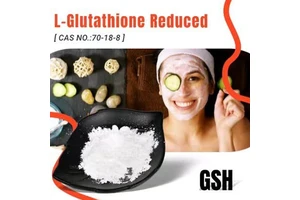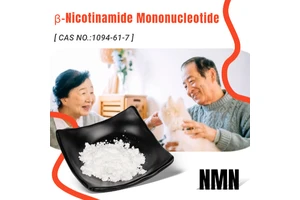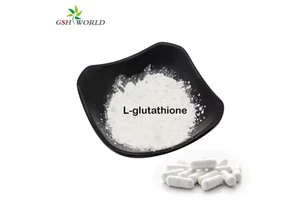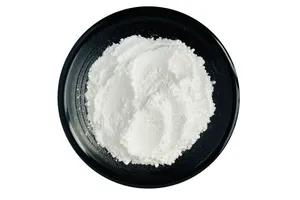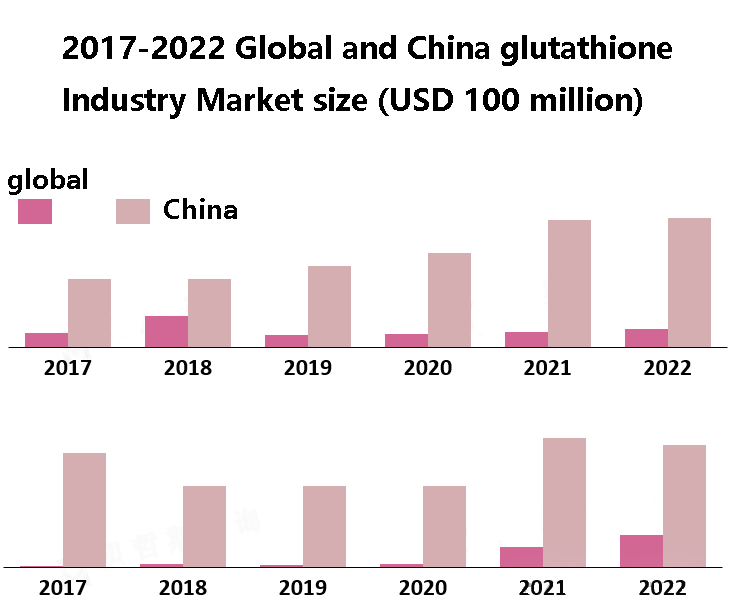Glutathione alleviates endoplasmic reticulum stress and autophagy
Background
Environmental hypoxia is a common phenomenon in aquaculture, which can cause damage to the gill tissues of fish.
Glutathione (GSH) is an important antioxidant in animal tissues, and its content decreases under hypoxic conditions.

The effect of glutathione on fish under hypoxic stress remains poorly understood.
This study aims to investigate the effect of glutathione on gill tissue damage in fish under hypoxic stress and explore its potential mechanism.
Method
The glutathione concentrations of the six experimental feeds were all different.
The actual glutathione contents in these feeds were determined by high performance liquid chromatography to be 0.00, 145.95, 291.90, 437.85, 583.80 and 729.75 mg/kg, respectively.
After the fish continuously consumed these feeds for 70 days, a 96-hour hypoxia stress experiment was conducted.
The experiment was set up with a normoxia group and a hypoxia group. The dissolved oxygen concentration in the normoxia group was 6 mg/L, while that in the hypoxia group was 1 mg/L.
Result
This study shows that glutathione can enhance the growth performance and antioxidant capacity of grass carp, while alleviating the structural damage to gill tissues caused by hypoxia stress.
Mechanism research further indicates that glutathione can alleviate hypoxia-induced oxidative damage to gill tissues and enhance their antioxidant capacity.
Glutathione can also inhibit the apoptosis of gill cells induced by hypoxia stress.
Glutathione also inhibits the initiation, nucleation, elongation and degradation stages of autophagy, thereby alleviating hypoxia-induced gill autophagy.
Research has found that glutathione can alleviate hypoxia-induced endoplasmic reticulum stress (ERS) in the gill, and this response may be related to the inhibition of the PERK, IRE1 and ATF6 signaling pathways.
Based on the determination of reactive oxygen species (ROS) and phosphatidylcholine (PC) content in gill tissues, the optimal supplementary doses of glutathione for grass carp under hypoxic stress conditions were 437.10 and 495.00mg/kg, respectively.
Conclusion
The experimental results confirmed the effectiveness of glutathione in alleviating gill tissue damage caused by hypoxia stress.
This study confirmed the feasibility and effectiveness of adding glutathione to the feed to alleviate hypoxia stress in fish.
Research Background
1. harm of hypoxia to gill tissues of fish
High-density aquaculture leads to a decline in dissolved oxygen in water bodies. As respiratory organs that directly contact water, gills are prone to damage from hypoxia.
Hypoxia induces oxidative stress, leading to excessive accumulation of ROS, which in turn causes lipid peroxidation, protein carbonylation and damage to cell structure.
2. biological functions of glutathione
Glutathione is the most important non-enzymatic antioxidant in cells, participating in ROS clearance, detoxification, and maintaining cellular REDOX homeostasis.
Previous studies have shown that glutathione can improve the growth performance of grass carp and enhance their resistance to microcystin-LR.
3. Research Motivation
Although glutathione has a definite antioxidant function, its mechanism of action in alleviating hypoxia-induced gill tissue injury remains unclear.
In particular, whether it functions by regulating endoplasmic reticulum stress and autophagy has not been systematically studied yet.
Overview of Research Methods
Experimental animals: Juvenile grass carp. The concentrations of glutathione in the 6 groups of feeds: 0, 145.95, 291.90, 437.85, 583.80, 729.75 mg/kg
Experimental Design
70-day feeding experiment → 96-hour hypoxia treatment (DO = 1.0 mg/L)
Multidimensional analysis
- Growth performance and body composition analysis
- Tissue antioxidant indicators (ROS, MDA, PC, SOD, CAT, GSH-Px, GR, etc.)
- Histopathology (H&E staining) and ultrastructure (TEM)
- Apoptosis (TUNEL, qPCR
- Autophagy (qPCR, Western blot: LC3b, P62)
- Endoplasmic reticulum stress (qPCR, WB, immunofluorescence: PERK, IRE1, ATF6, GRP78, CHOP, etc.)

Detailed explanation of research results
1. Glutathione enhances growth performance and overall antioxidant capacity of fish
Glutathione significantly increases the final body weight, protein deposition rate and fat deposition rate.
Reduce the contents of MDA and PC in the intestines, liver and muscles, and enhance the activities of enzymes such as SOD, CAT, GSH-Px and GR.
2. Glutathione improves structure of gill tissue and antioxidant status
Hypoxia leads to the shedding and necrosis of gill epithelial cells and the bending of gill filaments. Glutathione (437.85 mg/kg) significantly alleviated the above-mentioned lesions.
TEM showed that glutathione alleviated endoplasmic reticulum swelling and autophagosome formation.
Glutathione reduces the contents of ROS, MDA and PC in gill tissues and increases the activities of SOD, GSH-Px and GR.
3. Glutathione inhibits cell apoptosis
Hypoxia up-regulates *Bax, Caspase-3/8/9, Smac*, down-regulates Xiap, Foxa2; Glutathione reverses this trend.
TUNEL staining showed that glutathione significantly reduced the number of apoptotic cells.
4. Glutathione inhibits autophagy process
Hypoxia induces an increase in the expression of Ulk1, Beclin1 and LC3, while a decrease in P62. Glutathione reverses these changes.
Western blot confirmed that glutathione reduced the level of LC3b protein and increased the level of P62 protein.
5. Glutathione alleviates endoplasmic reticulum stress
Hypoxia activates three pathways of UPR:
PERK: Perk, eIF2a, Atf4 ↑
IRE1: Ire1, Xbp1 ↑
ATF6: Atf6 ↑
Glutathione significantly reduced the expression of the above genes and proteins (such as GRP78, CHOP, P-IRE1, etc.).
Immunofluorescence showed that glutathione reduced the fluorescence intensities of p-IRE1, Hrd1 and Sel1l.
Research innovation points
It was systematically revealed for the first time that glutathione alleviates hypoxic gill injury through a four-dimensional pathway of "antioxidant - anti-ERS - anti-autophagy - anti-apoptosis", with a comprehensive mechanism.
Clarifying the synchronous inhibitory effect of glutathione on the three UPR pathways (PERK, IRE1, ATF6) has deepened the understanding of glutathione's regulation of protein homeostasis.
The practical application value of glutathione as a feed additive in alleviating hypoxia stress in aquatic products was proposed, and the optimal addition amount was determined.
Through regression analysis, it was determined that the optimal addition amount of glutathione for grass carp under hypoxic conditions was 437.10-495.00 mg/kg, providing a basis for precise feeding.
Original link: 10.1186/s40104-025-01274-x

